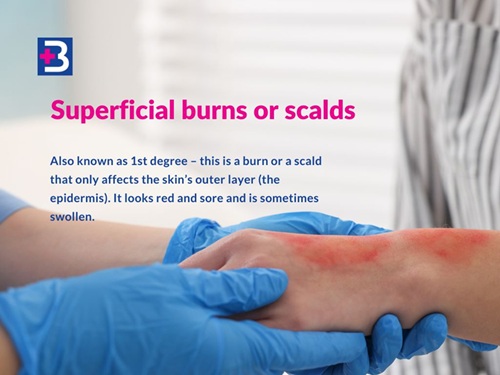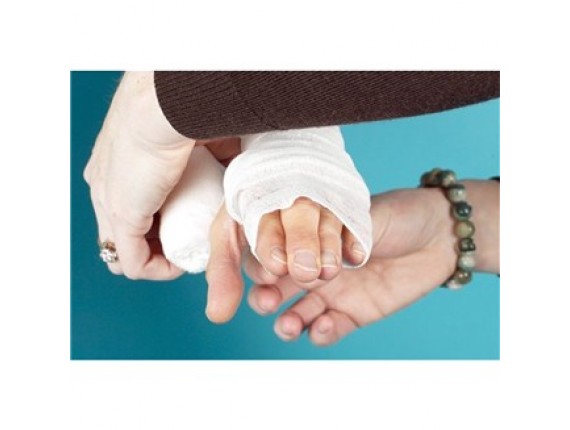How to recognise and treat a burn

Burns can happen unexpectedly—but with the right knowledge and tools, you can act quickly and confidently to help. Here's your guide to recognizing and treating burns safely and effectively.
Recognising Burns
Burns are categorized by severity:
- First‑degree burns: Superficial, affect only the outer skin layer; red, painful, dry, no blisters. Typical example: mild sunburn.
- Second‑degree burns: Partial-thickness, involving the epidermis and dermis; red, swollen, blistered, and painful.
- Third‑degree burns: Full-thickness damage reaching deeper tissues; skin may be charred, leathery, white or dark, and surprisingly painless due to nerve loss.
Care for Minor Burns
- Remove casualty from the heat source while ensuring your own safety. (see DRABC)
- Do not remove anything that is stuck to the burn but remove any clothing or jewellery near the burnt area of the skin.
- For 20 minutes cool with lukewarm or cool running water. Do not use ice.
- After cooling cover the burn with a layer of cling film
When to Seek Professional Help
You should seek medical attention if:
S - Size – It is larger than the casualty’s hand
C – Cause – It is a chemical, electrical or radiation burn
A – Age – The casualty is a child, infant or elderly person
L – Location – The burn/scald surrounds a limb or is on the face, neck, hands, feet,or a joint
D - Depth – If it is a full thickness burn/scald or you are unsure

